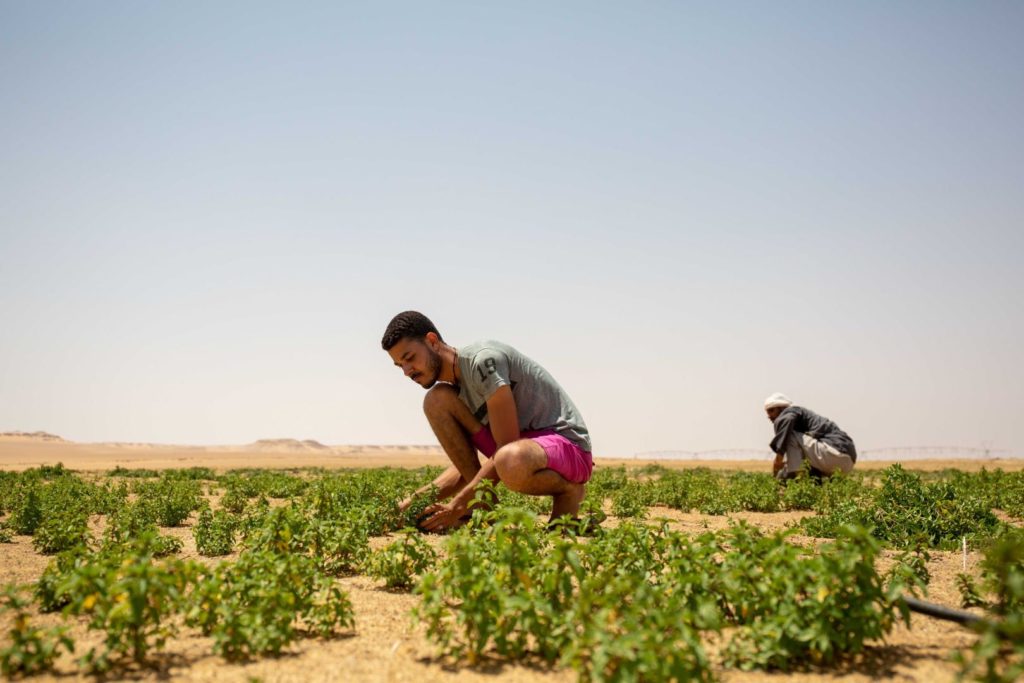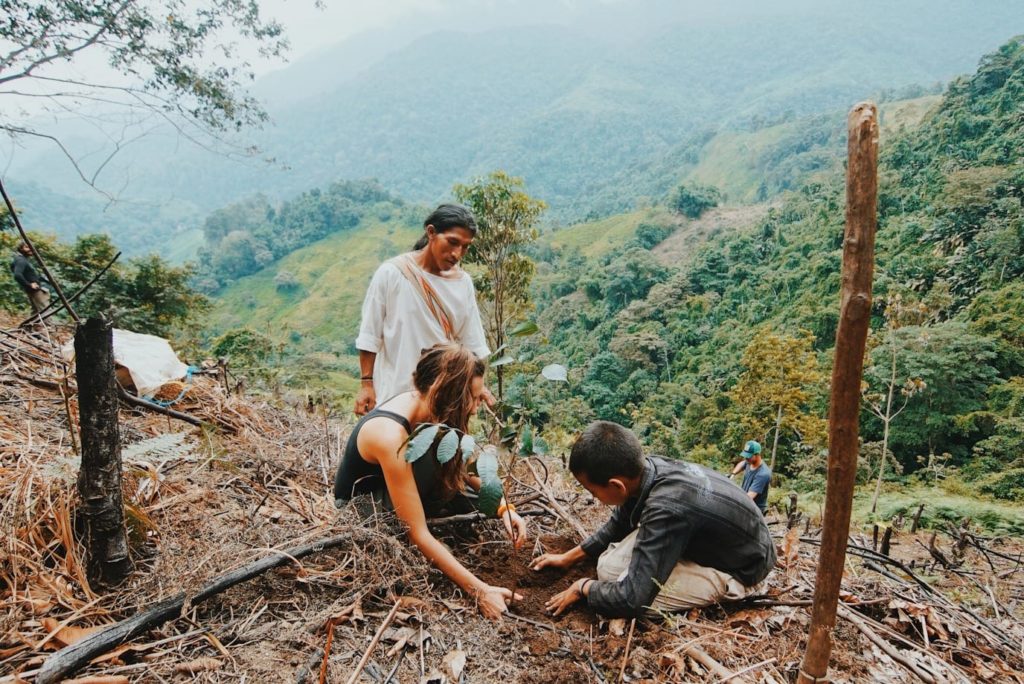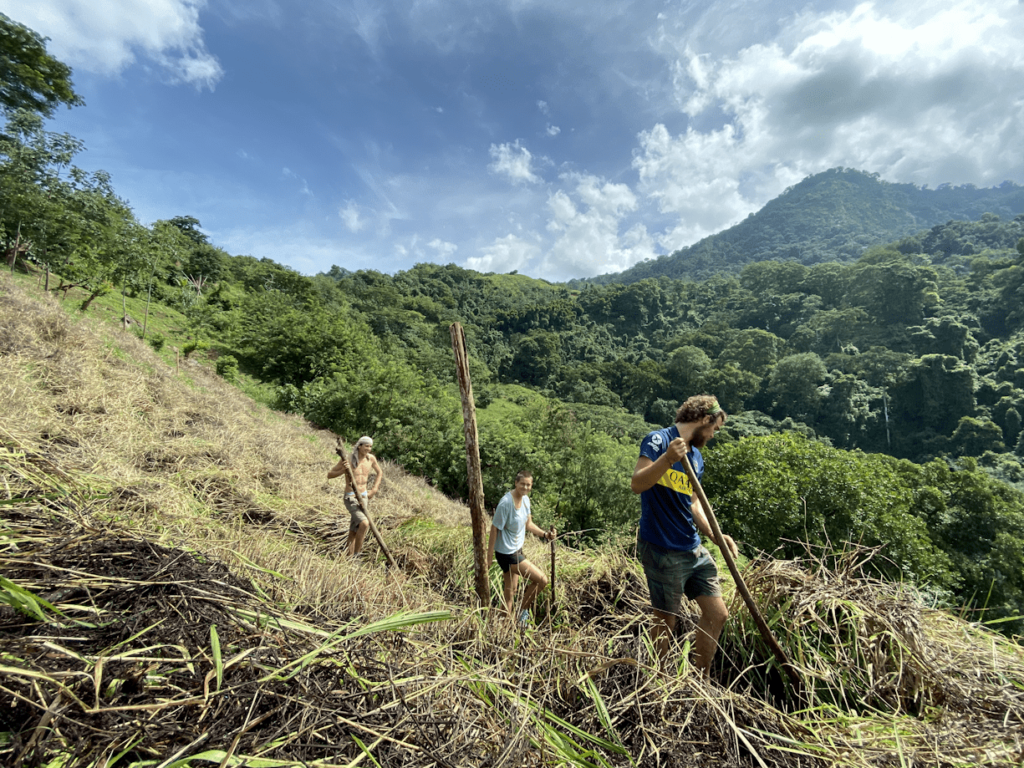Ecosystem Restoration Camps: The Global Grassroots Movement
Ashleigh Brown, Camp Coordinator and Co-founder of Ecosystem Restoration Camps, spoke to REVOLVE about the origins of what is today an international community working with the common mission to restore degraded landscapes and to educate as many people as possible about the value of ecosystem restoration.
Take us back to the beginning of Ecosystem Restoration Camps – how did it all start?
The concept was created by John D. Liu, who was working as a filmmaker in China documenting major political events. As he spent more time thinking about the arch of human history and evolution, he realized political events are just a small blip in human history, and what really matters is what happens geologically and ecologically.
He had this realization while working as a cameraman for film about a large eco-restoration project at the Loess Plateau to revive a large area of land highly degraded by human activities such as cutting down trees and the uncontrolled movement of grazing animals. The loss of vegetation from the land had reduced its ability to hold water, creating huge floods that washed silt into the Yellow River.
The Chinese government, in partnership with the World Bank, created a program where people were paid to remove their animals and plant trees instead, rebuilding the soil structure.

After he saw how effective this project was, John changed his life’s trajectory and studied ecology and soil science around the world and continued filmmaking, seeing repeatedly how ecosystem restoration could solve a multitude of problems such as desertification, food insecurity, climate change and can even help quell the flames of conflict in places where desertification has caused desperation.
John was sure this was something that everyone needed to do – but the projects he was involved in were high-level and inaccessible to everyday people.
Over the last five years there has been rising awareness of how serious climate change is as well as increasing interest from landowners that their land is degrading and a desire to rehabilitate it. But there is a real lack of knowledge and inaccessibility to materials for everyday people to learn how to do restoration work.
As nothing had existed to match all these needs – John sought a simple, low-cost way to get people involved, leading to the concept for the Ecosystem Restoration Camps. It marries landowners that want to do something to increase the ecological function and vitality of their land with people that want to get involved and learn how to do it.
Ecosystem restoration is very grassroots; it’s something that every single person on Earth should know about and know how to do.

How did the concept grow into the camps you have globally?
John had published an article in a permaculture magazine about the idea and started getting contacted by people on the Internet – myself included – which led to conversations on how we could make Ecosystem Restoration Camps happen.
At the end of 2016, the group started thinking about the legal structure, deciding to register as a non-profit in the Netherlands because there was a lot of interest in ecosystem restoration and many people to support it. In line with our grassroots ambitions, John preferred having paying members and it being a people-funded movement rather than trusts or corporates dictating its direction.
The initial goal was to get 1,000 people to pledge 10 EUR/month – which we got to.
We set up a supervisory board and the beginning of the team started to form. The supervisory board is the accountability body, working voluntarily so there is no conflict of interest. John also set up an advisory council with many people he had worked with throughout the years that were experienced in ecosystem restoration and regenerative agriculture. There are a lot of big names on the council, which has helped with our legitimacy and has been attractive to donors and those that want to join us.
In April 2017, we secured our first camp partner, a landowner in Spain with 3,000 hectares of mixed natural and agricultural land between Almería and Granada. He leased us a five-hectare plot for us to establish our first camp – Camp Altiplano. In addition to our first campers, we welcomed Daniel Halsey and Rhamis Kent as restoration designers to do an initial design of the land.
How did it replicate – can anybody with a plot of land apply to become a camp and how does that work?
We learned a lot of lessons from Camp Altiplano, the main one being that it is not necessary to start projects from scratch. It is not a cheap process and entails the building of structures and digging ponds for water, which isn’t ideal if you want to rapidly scale up.
We had to think of a different model that would allow us to work and scale up quicker. That’s when we started working with a company called Regeneration International, based in the US, that works globally campaigning for regenerative land use. They have a site in Mexico called Via Organica, which was a perfect camp partner because they already had the infrastructure to house and feed and teach people and were already doing ecosystem rehabilitation. So we organized 10-day practical learning experiences multiple times a year, where people can go and take part and learn more about ecosystem restoration.
Our main goal was to focus on restoring the land rather than building new infrastructure. From there, we were able to reach out to a number of different organizations and had applications from various existing sites which opened up the idea of what a restoration camp is and could be. We even had an application from a hostel, reaching out to us regarding the degraded land around them.
From there we considered the idea of having camping weekends, where people bring tents, or we’d partner with existing hostels and learning centers that are working in the area of connecting with nature but are not specifically working on ecosystem restoration. Alternatively, people can stay nearby in hotels or work with homestays. This flexibility has allowed us to scale up much quicker. In many cases its local people who are doing the restoration work, moving away from the eco-tourism label, towards it being about empowering and supporting local people on the front line of climate change who are doing something to save their land, and strengthening their own futures.

We are working all over the world: from indigenous groups in the high mountains of Colombia, to local organizations in Kenya that are creating jobs replanting mangrove forests.
Up until the beginning of 2019, we had one camp, and now in 2021 we have 37. That flexibility and openness is the reason why. We want our projects to be locally initiated and locally run. Anyone can become a camp as long as they are a group or site that are increasing the ecological function and vitality of the land around them. What we do is support these local initiatives with funding, training, expertise and create opportunities for camps to share knowledge with each other, creating an online resource for sites. We also offer access to people who want to come and volunteer or take part in a practical learning experience at the camps. We do all of this free of charge.
You obviously have a long-term vision. Is there a more official long-term commitment these camps have to make?
We don’t impose anything on the camps. We are discerning in terms of how much work needs to be done. We have a small team and a limited budget, so we look for partners who have long-term goals and are looking to work ‘beyond their fence’ and who will have a regional impact.
You are a partner of the UN Decade on Ecosystem Restorationu. Has it been helpful for you to gain additional visibility?
Now that we have the UN logo on our site, and vice versa, people who visit our site will believe in our organization more and view it as more legitimate. At the end of January, we organized an online symposium that was inspired by our partnership with the UN. It was called ‘Counting Down to Restoring the Earth,’ milestones and visions for the next 4 decades. We welcomed 5 speakers, giving their visions of what needs to happen in the next decades in order to restore the world’s ecosystems.
We have been added to a number of working groups with other UN partners and we were contacted by a researcher looking at different angles and stories for a Netflix series, so we are definitely already experiencing the benefits.
With respect to cities, is ERC going into urban areas?
While the majority of our camps are in rural areas, we are keen to develop further our influence in urban areas. We have just signed our first agreement in Los Angeles, working to restore and develop different parcels of land in the city. We are in talks with the local municipality and private landowners, even for the land beneath the iconic ‘HOLLYWOOD’ sign. We also have a module on urban restoration as part of our online course, with one of the most popular lessons focused on tiny forests. As a result, we have seen a number of tiny forests that have been developed due to the course.
How can people access your course?
The 9-month course is £800, all of the materials are pre-recorded, but every 25 students are given a facilitator to help guide them through the course. We also have a scholarship scheme and are trying to make it as accessible as possible. The next course starts in October 2021.